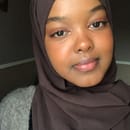We need to talk about Britney. And Diana. And every woman that the media loves to hate.
There are two podcasts I’ve been listening to regularly. The first is called You’re Wrong About; and recently they finished a 5-part series on Princess Diana from the beginning to the end of her life. With the popularity of the latest season of the Crown, where Diana’s marriage has been reiterated in HD on the small screen, it seems a prudent topic to discuss. The second podcast is called We Need to Talk about Britney, presented by a super fan, who discusses Britney Spears’ life, videos, iconic moments and discography with guests. Upon listening to both podcasts, I noticed the cycle of treatment these famous women get in the media.
Britney was an overnight sensation when she burst out with ‘…Baby One More Time’ in 1999. She was the teen dream – girls all around the world grew up with her. An instant hit with the press, she was young, fresh and extremely talented. She also had a southern charm and humility to her that was seen in all her interviews. Following the success of ‘Oops! I Did It Again’, a bright eyed and bubbly 18-year-old Britney had said in an interview: “the realisation of when you’re famous and you can’t go back, that’s really weird for me[…]I don’t want you to pity me or anything because I wouldn’t change my life” [1]. Watching her early interviews is like seeing a horror film where you watch the innocent girl walk closer to danger and scream for them to turn around and run. It’s uncanny, almost, to see Rosie O’Donnell telling her in 1999: “you’re a level-headed young girl and I hope you stay that way and I think that you will. Stay there in Louisiana, it’ll keep you grounded” [2]. It is tragic to see a girl descend into such an isolated, unhappy woman. She was never allowed to be famous and fine in life – it’s as if once a woman reaches a certain level of notoriety she must be disrespected and demeaned, torn down as punitive proof to show that humans are in fact not infallible. A sadistic science experiment if you will.
The culture of media when it comes to women has been predatory, disenfranchising and explicitly cruel. Britney taught us that. At the time of her widely ridiculed mental breakdown, she was the most photographed person in the world. Not long before her, this title was Diana’s. Britney Spears was the American Dream packaged in blonde perfection. The media – and subsequently the public’s- fascination with her was also double-sided. The media would obsessively revere her, but once her every move was scrutinised, she was cornered by the same media. She was 16 when she burst into the scene. She was 26 and pregnant with her first child when the world witnessed her break down, and even then, she was still being mocked by the media. From YouTube videos, to popular TV shows and late-night hosts parodying her mental trauma.
But even prior to this, her mental health was always being threatened by harsh public perception and media attacks. Her scandalous performances had given her a bad name with conservative and liberals alike. When she was 23, a congresswoman had even announced with pride in a TV interview: “if I ever got the chance to shoot Britney Spears, I would” [3]. Like Diana, everything about her was exposed on camera, literally and figuratively. There was no allure of mystery. Everyone knew everything there was to know about them because their personal life was chronicled on the front pages. They would have embarrassing moments photographed and were even sexually assaulted for the sake of a golden picture. The paparazzi in both instances would shout vulgar things at them to get a money shot of them blowing up in frustration; Britney would have men crouching outside car doors to catch shots under her skirts. Diana would have men catching transparency in her clothing. The argument that they deserve this because they ‘knew what they were getting into’ indicates how far humans can desensitise themselves to the suffering of others, and it’s horrible to see.
Now with constant talk of #FreeBritney from her fans, the public has finally decided to sympathise with this woman. It took 13 years, a mental breakdown, 2 children, a divorce and an ongoing conservatorship for people to look at Britney as human. As a 39-year-old woman, she is under a conservatorship that has restricted her from moving on from 2007. Typically, these are an option used for the elderly, where “a judge appoints a responsible person or organization (called the “conservator”) to care for another adult (called the “conservatee”) who cannot care for himself or herself or manage his or her own finances” [4]. This conservatorship furthers the dehumanisation Britney has experienced since 1999; even as a grown woman and a mother of 2, she has been exploited and forced to release music, tour and perform while not even having control of her own money. The conservatorship denies her rights that any other adult woman would have all because she had a lapse in her mental health. But this is common. Compromised mental health is not exclusive to the rich and famous – it is something a lot of humans endure at some point in their life. There have been many women who have made drastic decisions, have shaved their heads, or blown up at people, or even neglected their children. The only glaring difference is that there are not 500 hundred cameras fixed on them. Giant media corporations, paparazzi and tabloids rely on the power of schadenfreude to bring in profit. People love to see a woman fall more than they do when she is rising up.
Britney is the last remaining pop icon. She is a symbol of youth and global nostalgia- the last fragment of a time where we didn’t feel like there was an impending apocalypse hanging over our heads. That being said, the Free Britney movement is a human rights issue. We should not let Britney become another tragedy, and no human being should be treated this way.
Sources:
[1] Britney Spears: In Her Own Words | MTV News
[2] Britney Spears interview 1999
[3] Britney Spears Primetime Interview With Diane Sawyer 2003
[4] Conservatorship | California Courts The Judicial Branch of California



